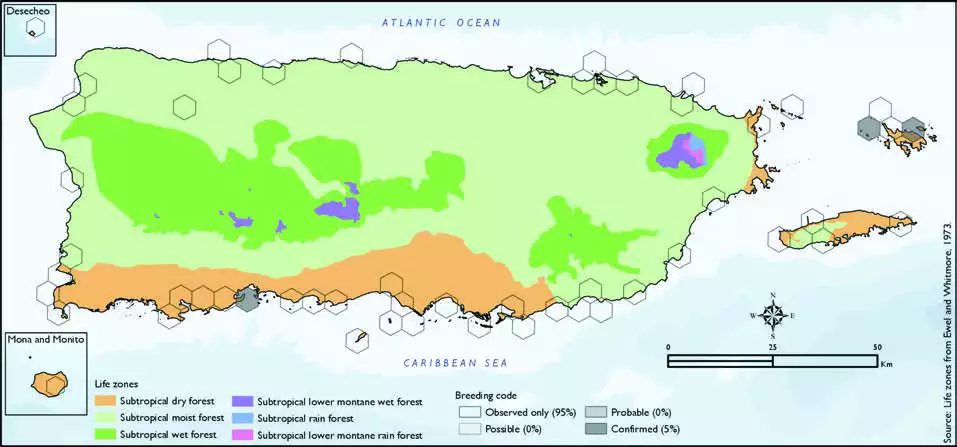Sandwich Tern
Description
The Sandwich tern (Thalasseus sandvicensis) is a tern in the family Laridae. It is very closely related to the lesser crested tern (T. bengalensis), Chinese crested tern (T. bernsteini), Cabot's tern (T. acuflavidus), and elegant tern (T. elegans) and has been known to interbreed with the lesser crested. It breeds in the Palearctic from Europe to the Caspian Sea wintering to South Africa, India and Sri Lanka.
Distribution & Habitat
The Sandwich Tern occurs through the tropical, subtropical,
and temperate coastal regions
of the Atlantic Ocean (Raffaele
and others 1998). In Puerto Rico,
it can be seen throughout the
year, but it is most abundant
from September to November
and from March to May (Biaggi
1997). It nests on and around
Culebra and some islets off
Guayanilla and La Parguera in
the municipality of Lajas, while
it is a regular visitor during the
winter in the San Juan harbor
and the bays of Boquerón and
Mayagüez (Kepler and Kepler
1978, Oberle 2018). It is also present on Vieques, where it
is considered a rare visitor in
summer and fall, and extremely
rare in spring (Gemmill 2015).
It usually inhabits coastal areas,
harbors, and lagoons (Raffaele
and others 1998). The atlas
fieldwork yielded a total of 76
records within 55 hexagons or 11
percent of the 479 total hexagons
(see map). Of the 55 hexagons
where this species was found,
breeding met the atlas definition
of confirmed in 5 percent (3) of
the hexagons, while this species
was observed in 95 percent (52)
of the hexagons but without
evidence of breeding (see map).Sandwich Tern distribution. The map shows the highest breeding code by hexagon and overlaying the ecological life zones in
Puerto Rico. Note: percentages may not total 100 due to rounding. 127Sandwich Tern/Charrán Piquiagudo

Breeding Habits
Previously published reports indicate that the Sandwich Tern
breeds from May to July (Raffaele
and others 1998). A simple
scrape nest is made on a sand
bar or in coral rubble (Raffaele
and others 1998). Atlas results
confirm that this species breeds
in June and that the breeding
activity takes place in the
subtropical dry forest life zone
(see chart). Results show that this species breeds in coastal areas
within the subtropical dry forest
life zone (100 percent of the
hexagons) (see table and map).
Conservation
The current overall population trend of the Sandwich Tern is
fl uctuating, although some of
the populations are stable and
others have unknown trends
(Wetlands International 2012).
This species is currently listed as a species of least concern by
the IUCN (BirdLife International
2018). Locally, this species is not
listed in any of the threatened
categories of PRDNER and
USFWS. In Puerto Rico, the
Sandwich Tern has a protected
habitat in land of 3 percent or 2
km2 of the total area covered by the hexagons where evidence
of breeding was found for this
species (72 km2).
Related Species
Family:
gull